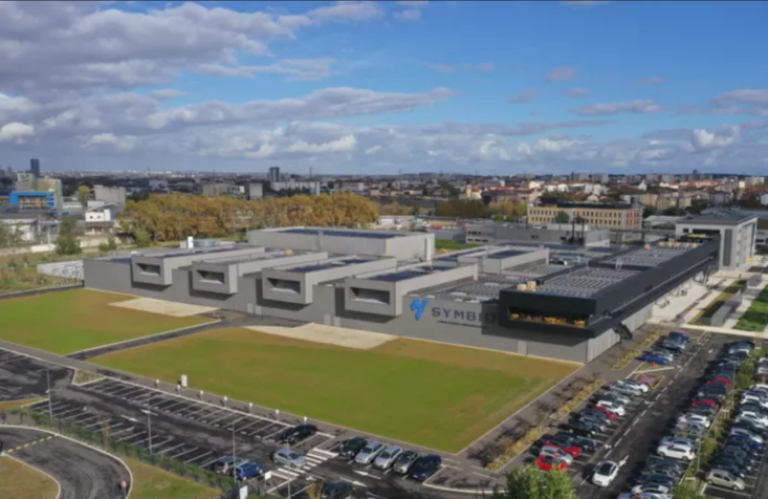Symbio, an equally owned joint venture between Forvia, Michelin and Stellantis, has inaugurated SymphonHy, its first H2 fuel cell gigafactory.
Located in Saint-Fons, in the Auvergne-Rhône-Alpes region of France, SymphonHy is said to be the largest integrated fuel cell production site in Europe. The site houses Symbio’s headquarters, a production plant, an innovation hub and the Symbio Hydrogen Academy.
The facility has a current production capacity of 16,000 fuel cells, which is set to ramp up to 50,000 units by 2026. It employs over 450 engineers, with 100 of those dedicated to R&D.
Stellantis, a Symbio co-shareholder, has been developing H2-powered light commercial vehicles and is set to expand its range to include large vans with a mid-power architecture, a range of up to 500km and a recharge time of less than 10 minutes. Stellantis has now also confirmed its plans to develop hydrogen powertrains for its Ram brand pickups, with all of its FCEVs to be equipped with fuel cells by Symbio.
Philippe Rosier, CEO of Symbio, stated, “SymphonHy is proof of Europe’s industrial and technological leadership. Together with the entire ecosystem and our private and public partners, we are ready to scale up and make hydrogen electric mobility a sustainable, high-performance and affordable reality.
“Delivered in less than two years, SymphonHy is testimonial of Symbio’s ability to meet its industrial commitments, underpinning the acceleration of zero-emission hydrogen mobility deployment. The first 100% fuel cell system assembled at SymphonHy was produced in October 2023, just one month after the gigafactory became operational.”
In partnership with German group Schaeffler, Symbio has also set up a 50/50 joint-venture, Innoplate, to produce bipolar plates (BPPs), a strategic component in fuel cells. Based in Alsace, France, Innoplate is planned to be operational in the first quarter of next year with an initial capacity of four million BPPs, rising to approximately 50 million BPPs annually by 2030.


